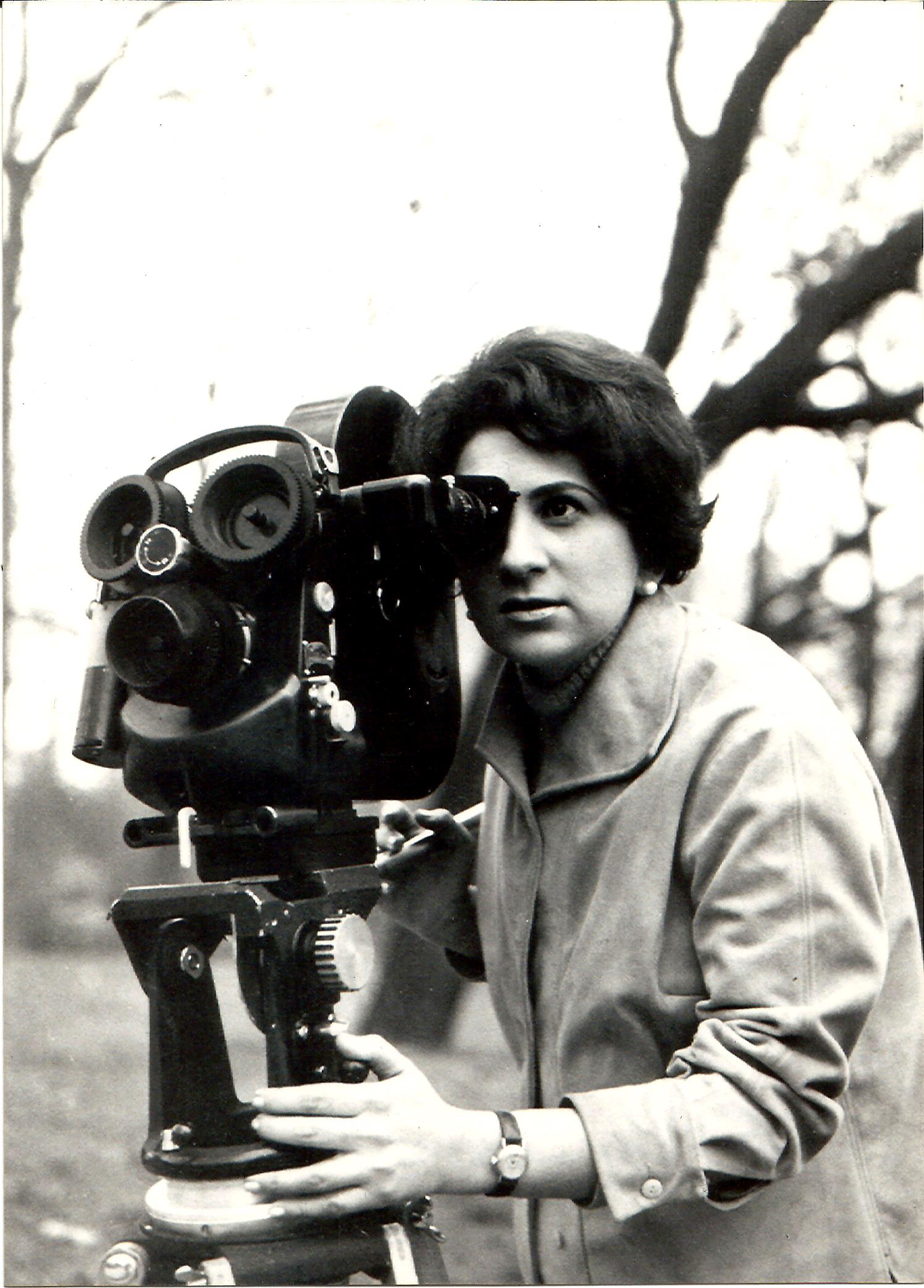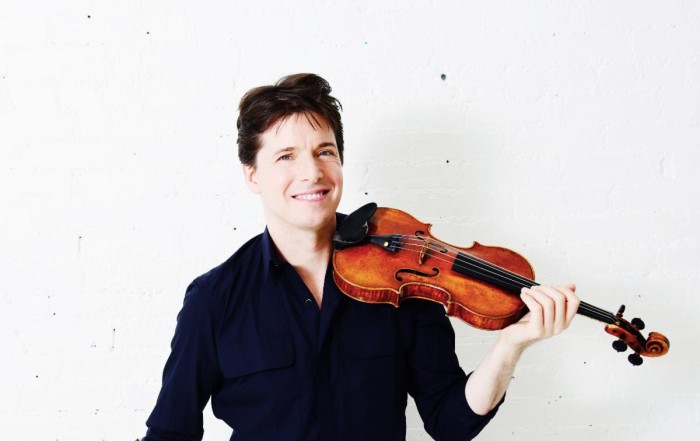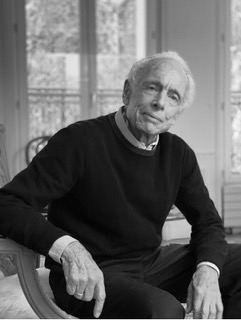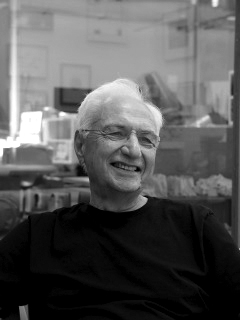|
June 13th 2019
FOR IMMEDIATE RELEASE
A message from
The Venezuelan American Endowment for the Arts
Ali Cordero Casal
Chairman
The Venezuelan American Endowment for the Arts
& the Board of Directors
|
|
Today we celebrate VAEA’s 29th anniversary and the 229th birth anniversary of José Antonio Páez with this important announcement.
|
MARGOT BENACERRAF
We live in the age of images and no other medium has influenced more our perception of reality than film. The train arriving at the station captured on camera by the Lumière brothers in 1896 took us on an endless voyage throughout the human creative imagination. Since their inception in Western culture, films have shaped our emotions transforming the way we perceive ourselves, and the world around us. Movies represent the ultimate spectacle; like opera – the creation par excellence of the Baroque period – they transform tales of everyday life into timeless stories, equally epic and lyrical, tragic or amusing, but always illuminating. Every film possesses an instant of truth. Movies still remain the most popular medium to disseminate creativity and culture.
About Margot Benacerraf |
|
Margot`s extraordinary energy; intellectual curiosity and artistic creativity have always remained steadfast, bringing everlasting beauty to the art of filmmaking.
Benacerrat is a distinguished Venezuelan filmmaker and film promoter, and a major figure in Latin American film history. Benacerraf was born in Caracas in 1926 to a Sephardic family from Spanish Morocco. While studying philosophy and humanities at the Central University of Venezuela [UCV] her innate creativity and everlasting curiosity prompted her to publish essays and plays that won immediate recognition in her native country and abroad. In 1949 she was invited by Columbia University to travel to New York, where she studied drama with the great German theatrical director Erwin Piscator. It was during this period in New York that she discovered cinema and filmmaking. After completing her scholarship she moved to Paris in 1950 where she studied filmmaking at the prestigious IDHEC [Institut des Hautes Etudes Cinématographiques]. In 1951 Benacerraf completed her first film Reverón, a documentary on the everyday life and creative process of one of Venezuela’s most distinguished artists of the 20 Century, Armando Reverón. The film captures with extraordinary subtlety the complex personality and creativity of the eccentric artist. The documentary was screened at the First Berlin Festival in 1952 with the unanimous acclaim of public and critics like André Bazin and Lotte Eisner. Araya, her second and most ambitious documentary, was released in 1959; it was screened in the Venice and Moscow film festivals, and at Cannes where it won the International Critics Prize. The film confers an epic dimension to the everyday life of the inhabitants of a salt mining town in the isolated Eastern Venezuelan coast. Araya became legendary among moviegoers and internationally revered by filmmakers and critics.
“The film, as Luchino Visconti’s La Terra Trema is a combination of extraordinary beauty, outraged social conscience and almost mythic grandeur. The experience was stunning in 1959. It`s every bit as stunning today.”
– Stuart Klawans, Film reviews, The Nation
Directors Luis Buñuel, Roberto Rosellini and Glauber Rocha praised her cinematic work and writers Miguel Otero Silva and Gabriel García Márquez often expressed their desire to have her making the film version of their literary works.
|
About Schnabel & BenacerrafThis year VAEA is honoring with the Paez Medal of Art 2019 for the first time two filmmakers, these artists use film as a medium of expression after exploring others. Margot Benacerraf studied philosophy and literature and has always been a conscious writer; by using faces, shapes, and movement she composes in her films a minute- essay on the human condition. Julian Schnabel is a gifted artist who burst onto the art scene in the 1980s, seeking a way out of abstraction; he created iconoclast works that later on in his artistic career flawlessly transformed into moving images; configuring an eloquent narrative of forms. Challenging film critic André Bazin’s proposition that film and painting are mutually exclusive, Schnabel seeks in the subject of painting the connection to that centrifugal creative force that prolonged indefinitely into the universe. In a similar manner, the young Margot Benacerraf played with her camera to mimic the ritual dance of the artist she was filming to discover that she was also painting the evanescent reality of a film. The creative process equally fascinates Margot Benacerraf and Julian Schnabel: how does creativity work? Is it possible to capture it on camera?
Both filmmakers attempt to recreate those moments when mind and body coincide to produce art, unveiling in the process the limits of human reasoning to understand the complexities of the creative mind. In their films Reveron (1959) and Van Gogh (2018), Benacerraf and Schnabel explore the infinite realities elicited by painting, appealing ultimately to the fundamental fraternal quality motivating every artistic creation.
|
|
Texts by: Mario Valero, Assistant professor
Fashion Institute of Technology New York
VAEA’s advisory board member
|
Vivimos en la era de las imágenes y no hay otro medio que más haya influido en nuestra percepción de la realidad, que el cine. El tren llegando a la estación es capturado por la cámara de los hermanos Lumière en 1896 nos llevó, en un viaje sin fin, a lo largo de la imaginación creativa humana. Desde su inicio, en la cultura occidental, las películas han plasmado las emociones que transforman la imagen en que nos percibimos a nosotros mismos y al mundo que nos rodea. Las películas representan el espectáculo final; como la ópera – la creación por excelencia del periodo barroco – las anécdotas de la vida cotidiana se transforman en cuentos atemporales, igualmente épicos y líricos, trágicos o divertidos, pero siempre iluminadores. Cada película tiene un instante de la verdad. Las películas siguen siendo el medio más popular para difundir la creatividad y la cultura.
Acerca de Margot Benacerraf |
|
La energía de Margot es extraordinaria; su curiosidad intelectual y su creatividad artística siempre se han mantenido firmes, con la belleza eterna y con el arte de la cinematografía. Benacerrat es una distinguida cineasta venezolana, promotora de la cinematografía, así como una figura importante en la historia del cine latinoamericano. Benacerraf nació en Caracas en 1926 en una familia española sefardí de Marruecos. Mientras estudiaba filosofía e humanidades en la Universidad Central de Venezuela [UCV], su creatividad innata y su curiosidad eterna la impulsaron a publicar ensayos y obras de teatro que ganaron el reconocimiento inmediato tanto en su país de origen, como en el extranjero. En 1949 fue invitada por la Universidad de Columbia a viajar a Nueva York, donde estudió drama con el gran director teatral alemán Erwin Piscator. Fue durante este período en Nueva York, que ella descubrió su inclinación genuina hacia el cine y la realización cinematográfica. Después de completar su beca se trasladó a París en 1950, donde estudió cine en el prestigioso Instituto de Altos Estudios Cinematográficos (IDHEC). En 1951 Benacerraf completó su primera película: Reverón, un documental sobre la vida cotidiana y el proceso creativo de uno de los más distinguidos artistas del siglo XX, Armando Reverón de Venezuela. La película capta con extraordinaria sutileza la compleja personalidad y la creatividad de este excéntrico artista. El documental se proyectó en el Primer Festival de Berlín en 1952, con el reconocimiento unánime de público y críticos como André Bazin y Lotte Eisner. Araya, su segundo y más ambicioso documental, fue lanzado en 1959; se proyectó en los festivales de Venecia y Moscú y en Cannes, donde ganó el Premio Internacional de la Crítica. La película confiere una dimensión épica a la vida cotidiana de los habitantes de una ciudad minera de sal, ubicada en la aislada costa del este venezolano. Araya se tornó legendaria entre los cinéfilos y fue internacionalmente reverenciada por críticos y cineastas. “La película, al igual que La Tierra Tiembla de Luchino Viconti, es una combinación de belleza extraordinaria, conciencia social indignada y de casi una grandeza mítica. La experiencia fue impresionante en 1959. Y cada parte de ella está actualizada hoy por hoy”.
– Stuart Klawans, críticas de cine, La Nación
Directores como Luis Buñuel, Roberto Rossellini y Glauber Rocha elogiaron su obra cinematográfica y los escritores Miguel Otero Silva y Gabriel García Márquez a menudo expresaron sus deseos de realizar la versión literaria de sus obras cinematográficas.
|
Margot Benacerraf fue una figura pionera en muchos aspectos, como cineasta femenina de América Latina e incansable promotora de la cultura y del cine venezolano y latinoamericano. En 1965 fue nombrada directora del Instituto Nacional de Cultura y Bellas Artes (INCIBA) de Venezuela, la institución cultural más importante del país. Ella insistió particularmente en la promoción de eventos culturales y educacionales en las regiones más aisladas del país. En 1966 fundó Archivo Nacional de Cine de Venezuela [Cinemateca Nacional] y contribuyó activamente a la organización de la Unión Latinoamericana de Cinemateca (UCAL).
Acerca de Schnabel & BenacerrafEste año VAEA está honrando por primera vez, con la Medalla Páez de Arte 2019, a dos cineastas, estos artistas utilizaron el cine como un medio de expresión, después de explorar otros. Margot Benacerraf estudió filosofía y literatura y siempre ha sido una escritora consciente, en tan solo minutos ella, utilizando caras, formas y movimientos, creó ensayos sobre la condición humana, para sus películas. Julián Schnabel es un artista dotado, que irrumpió en la escena del arte en la década de 1980, se caracteriza por su búsqueda de una salida a la abstracción; creó obras de iconoclastias, que más adelante en su carrera artística, sin problemas, se transformaron en imágenes en movimiento, configurando una elocuente narrativa de formas. Ante el reto crítico de André Bazin que plantea que el cine y la pintura son mutuamente exclusivas, Schnabel busca en el tema de la pintura, la conexión de la fuerza creativa centrífuga que se prolonga indefinidamente en el universo. De manera similar, la joven Margot Benacerraf jugó con su cámara para imitar la danza ritual de la artista que estaba filmando, para descubrir que ella también estaba pintando la realidad evanescente de una película. El proceso creativo fascina por igual a Margot Benacerraf y a Julián Schnabel: ¿Cómo funciona la creatividad? ¿Es posible capturarla en cámara? Ambos realizadores intentan recrear los momentos en que la mente y el cuerpo coinciden para producir el arte, la revelación en el proceso de los límites de la razón humana, para entender las complejidades de la mente creativa. En sus películas Reverón (1959) y Van Gogh (2018), Benacerraf y Schnabel respectivamente, exploran las infinitas realidades producidas por la pintura, en última instancia, apelando a la calidad fraterna fundamental de motivar a cada creación artística.
|
|
Textos de: Mario Valero, profesor asistente
Fashion Institute of Technology of New York
Miembro de la junta asesora de VAEA
|
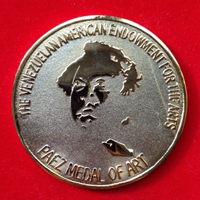
About the Páez Medal
The Páez Medal of Art is awarded once a year to an individual or group that has had an impact and contributed to the excellence, growth, support and proliferation of the arts in Venezuela and the United States; Previous recipients include: Gustavo Dudamel in 2018, Bob Colacello in 2017, Marisol Escobar in 2016; Annie Leibovitz in 2015; Sofía Imber in 2014, Robert Wilson in 2013 and Carlos Cruz-Diez in 2012.
A documentary about the life of Margot Benacerraf by filmmaker Jonathan Reverón
Available to friends of VAEA and the press by request at contact@vaearts.org
About VAEA
The VAEA is a NY based 501(c)3 public charity, founded on June 13, 1990 with the mission of promoting the best of Venezuelan and US cultures through bi-national cultural, educational and social programs.
For additional information visit VAEArts.org
For sponsor opportunities and early table reservations contact:
Ali Cordero Casal, Chairman, alicorderocasal@vaearts.org
+1 3053228899
The Paez Medal of Art 2022 to Joshua Bell
The Paez Medal of Art 2022 to Joshua Bell VAEA 33rd anniversary announcement Oct 25th, 2023 Immediate Release A message from our: Chairman, Ali Cordero Casal and The [...]
Fundación Empresas Polar The Páez Medal of Arts 2021
July 29th, 2022 FOR IMMEDIATE RELEASE A message from The Venezuelan American Endowment for the Arts Reinaldo & Carolina Herrera Advisory Board Chairs Ali Cordero Casal Chairman The Board of Directors [...]
JAMES ALCOCK is one of the two recipient of VAEA’s Páez Medal of Art 2020
June 13th 2020 FOR IMMEDIATE RELEASE A message from The Venezuelan American Endowment for the Arts Ali Cordero Casal Chairman The Venezuelan American Endowment for the Arts & the Board of Directors Today we [...]
FRANK GEHRY is one of the two recipient of VAEA’s Paez Medal of Art 2020
June 13th 2020 FOR IMMEDIATE RELEASE A message from The Venezuelan American Endowment for the Arts Ali Cordero Casal Chairman The Venezuelan American Endowment for the Arts & the Board of Directors Today we [...]
JULIAN SCHNABEL is one of the two recipient of VAEA’s Paez Medal of Art 2019
June 13th 2019 FOR IMMEDIATE RELEASE A message from The Venezuelan American Endowment for the Arts Ali Cordero Casal Chairman The Venezuelan American Endowment for the Arts & the Board of Directors Today we [...]

